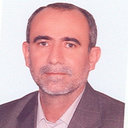Gallic acid improved behavior, brain electrophysiology, and inflammation in a rat model of traumatic brain injury.
Từ khóa
trừu tượng
Traumatic brain injury (TBI) is one of the main causes of intellectual and cognitive disabilities. In the clinic it is essential to limit the development of cognitive impairment after TBI. In this study, the effects of gallic acid (GA; 100 mg/kg, per oral, from 7 days before to 2 days after TBI induction) on neurological score, passive avoidance memory, long-term potentiation (LTP) deficits, and levels of proinflammatory cytokines including interleukin-1 beta (IL-1β), interleukin 6 (IL-6), and tumor necrosis factor-α (TNF-α) in the brain have been evaluated. Brain injury was induced following Marmarou's method. Data were analyzed by one-way and repeated measures ANOVA followed by Tukey's post-hoc test. The results indicated that memory was significantly impaired (p < 0.001) in the group treated with TBI + vehicle, together with deterioration of the hippocampal LTP and increased brain tissue levels of IL-1β, IL-6, and TNF-α. GA treatment significantly improved memory and LTP in the TBI rats. The brain tissue levels of IL-1β, IL-6, and TNF-α were significantly reduced (p < 0.001) in the group treated with GA. The results suggest that GA has neuroprotective properties against TBI-induced behavioral, electrophysiological, and inflammatory disorders, probably via the decrease of cerebral proinflammatory cytokines.



